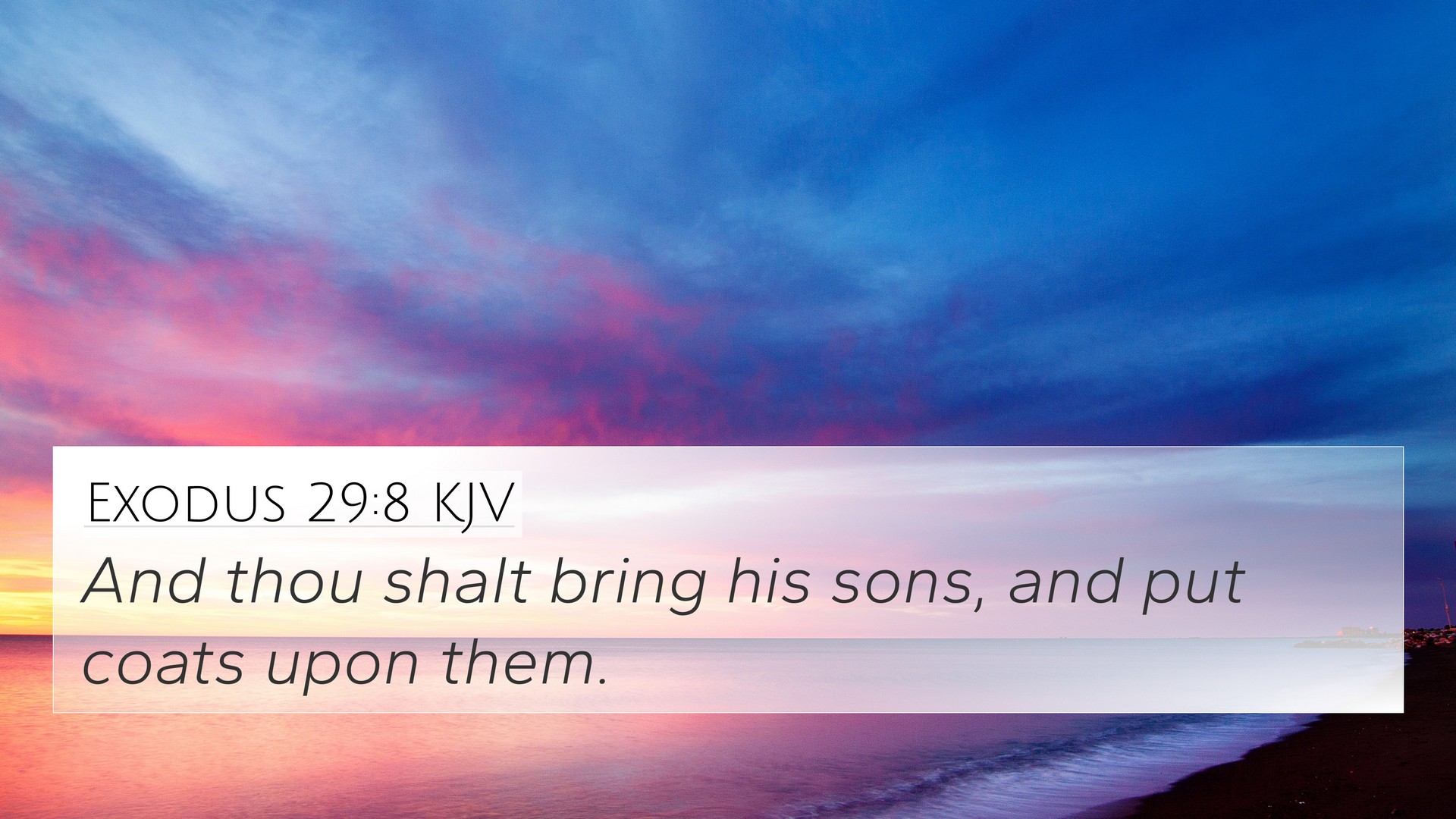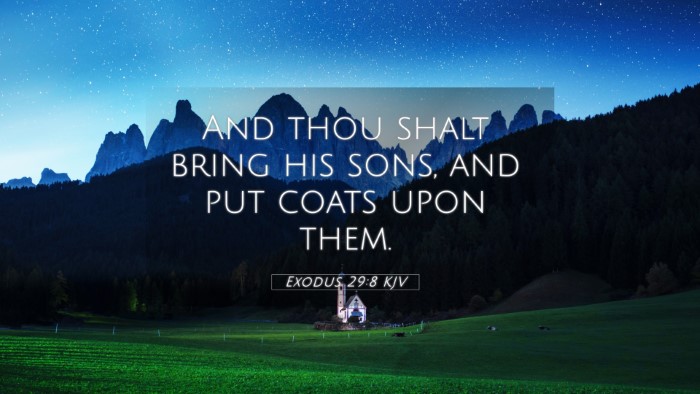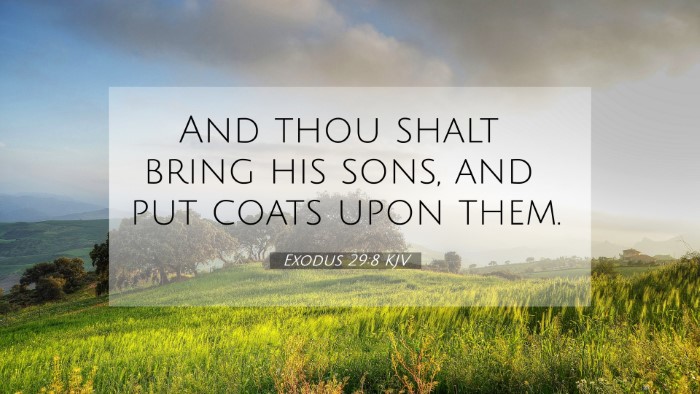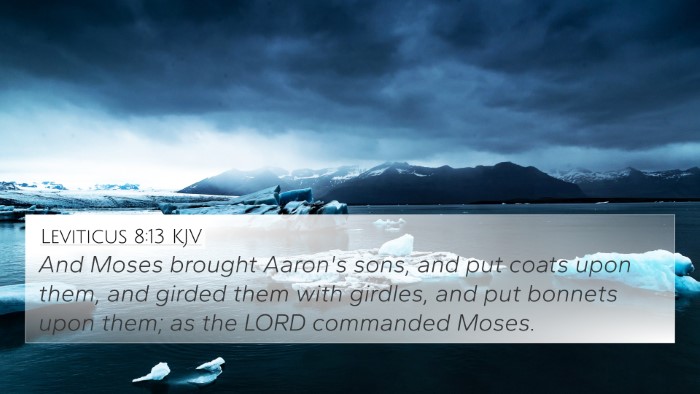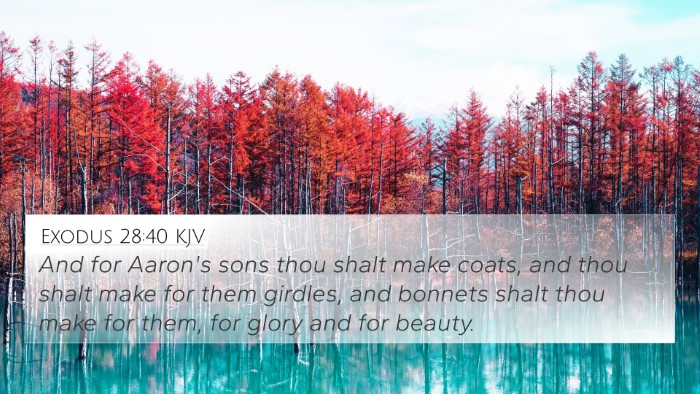Understanding Exodus 29:8: An In-Depth Analysis
Exodus 29:8 states: "Then you shall bring the bull before the tabernacle of meeting, and Aaron and his sons shall put their hands on the head of the bull."
This verse is a crucial part of the instructions regarding the consecration of Aaron and his sons as priests. It outlines specific actions that symbolize the transfer of responsibility and sin from the priests to the sacrificial animal, which is fundamental to understanding the sacrificial system of the Old Testament.
Commentary Insights
-
Matthew Henry's Commentary:
Henry highlights the significance of the bull as a sin offering, symbolizing atonement. The act of laying hands on the bull's head signifies the priests' identification with the animal, representing the weight of sin that is being transferred. This was necessary for their sanctification and service to God.
-
Albert Barnes' Notes:
Barnes emphasizes the ritualistic nature of this act, illustrating the seriousness of sin and the solemnity of the consecration process. He notes that by placing their hands upon the bull, Aaron and his sons acknowledge their sinful nature and the necessity of atonement. It also signifies their role in carrying the burdens of the people before God.
-
Adam Clarke's Commentary:
Clarke elaborates further on the implications of this act, suggesting that it forms a connection between the priesthood and the sacrificial system. He explains that the bull serves not just as a redemptive measure, but as a reminder of the holiness required to approach God and the need for regular purification.
Thematic Connections and Cross-References
Examining Exodus 29:8 through the lens of scriptural cross-referencing reveals a network of biblical connections that deepens our understanding of this verse and its theological implications. Below are several relevant cross-references:
- Leviticus 4:3: Discusses the sin offering for the high priest, illustrating the need for atonement for leaders.
- 1 Peter 2:9: Refers to believers as a royal priesthood, linking the Old Testament priestly system to New Testament believers.
- Hebrews 9:22: States that without the shedding of blood there is no forgiveness of sins, reinforcing the importance of sacrificial rites.
- Isaiah 53:6: Prophetic imagery of bearing sins, and parallels the symbolism of the sacrificial animal.
- Romans 12:1: Encourages believers to present their bodies as living sacrifices, connecting with the Old Testament sacrificial system as a paradigm for worship.
- Exodus 30:10: Discussing atonement for the altar, illustrating continual need for a means of reconciliation with God.
- John 1:29: John the Baptist refers to Jesus as "the Lamb of God," indicating the ultimate fulfillment of sacrificial roles found in Exodus.
Understanding the Process of Consecration
The act detailed in Exodus 29:8 is vital as it sets the scene for how the priests were to be inducted into their sacred duties. The consecration process involved:
- Symbolic Cleansing: The act of placing hands on the bull signified the transfer of impurity and guilt.
- Identification: It was a personal acknowledgment by the priests of their need for God's mercy and forgiveness.
- Preparation for Service: Before they could serve the people, they needed to recognize their own shortcomings and the need for divine approval.
Conclusion: Significance in the Biblical Narrative
The instruction found in Exodus 29:8 serves as a crucial reminder of the centrality of sacrifice in the relationship between God and His people. As one engages in a comprehensive Bible cross-reference study, the connections drawn from this verse, combined with the commentary of theologians, illuminate the profound truths regarding sin, atonement, and the sacrificial system that flows throughout both the Old and New Testaments.
Your Guide to Further Study
For those interested in deeper theological study, practical tools for Bible cross-referencing such as concordances and cross-reference guides are invaluable resources. Engaging with cross-referencing Bible study methods can enrich one's understanding of scripture, revealing how interconnected the biblical texts truly are.
In this age of digital learning, finding cross-references in the Bible has never been easier. Utilizing apps and online resources can provide quick access to linking Bible scriptures, allowing for an enhanced experience as you explore God’s word.
